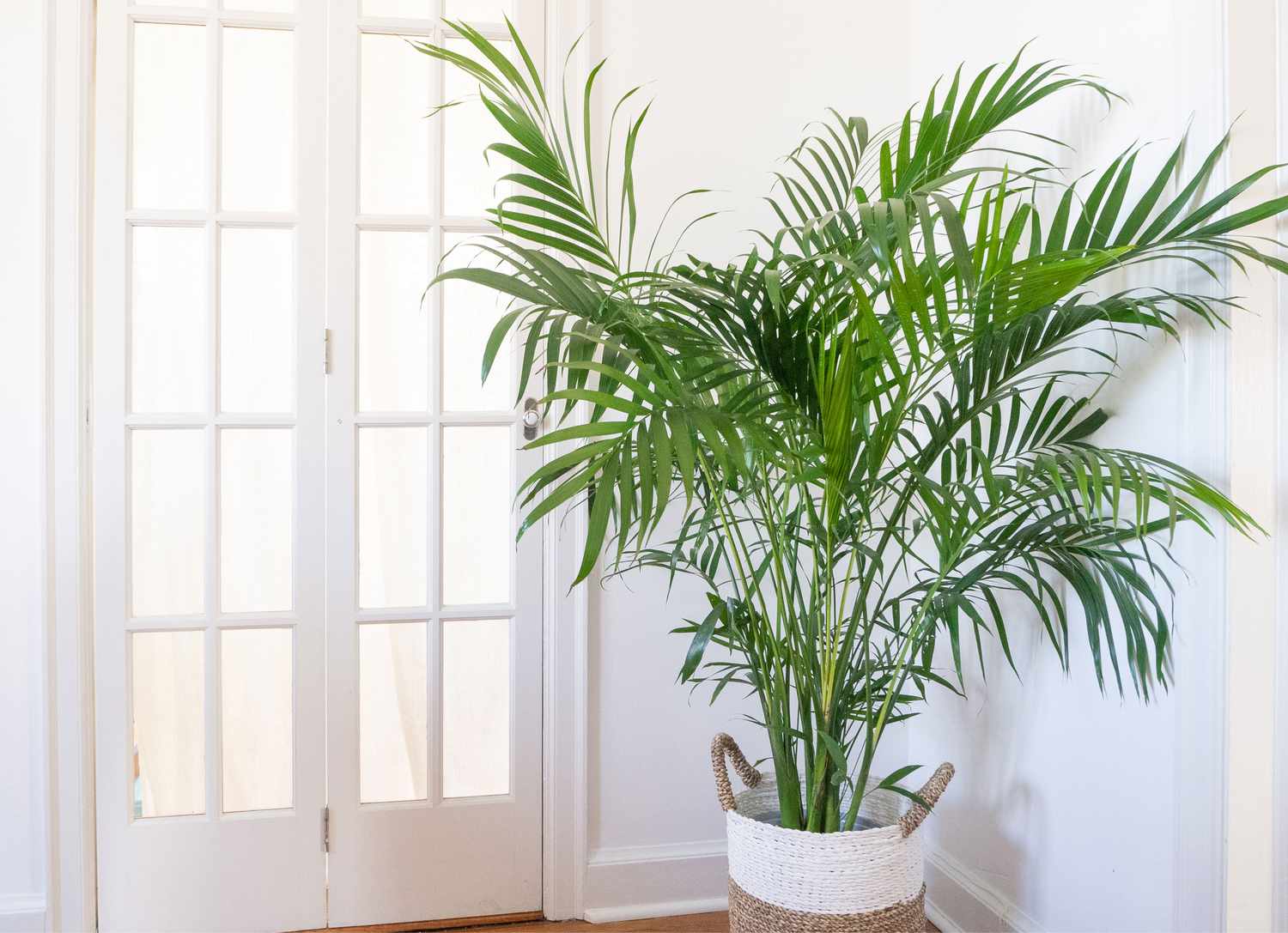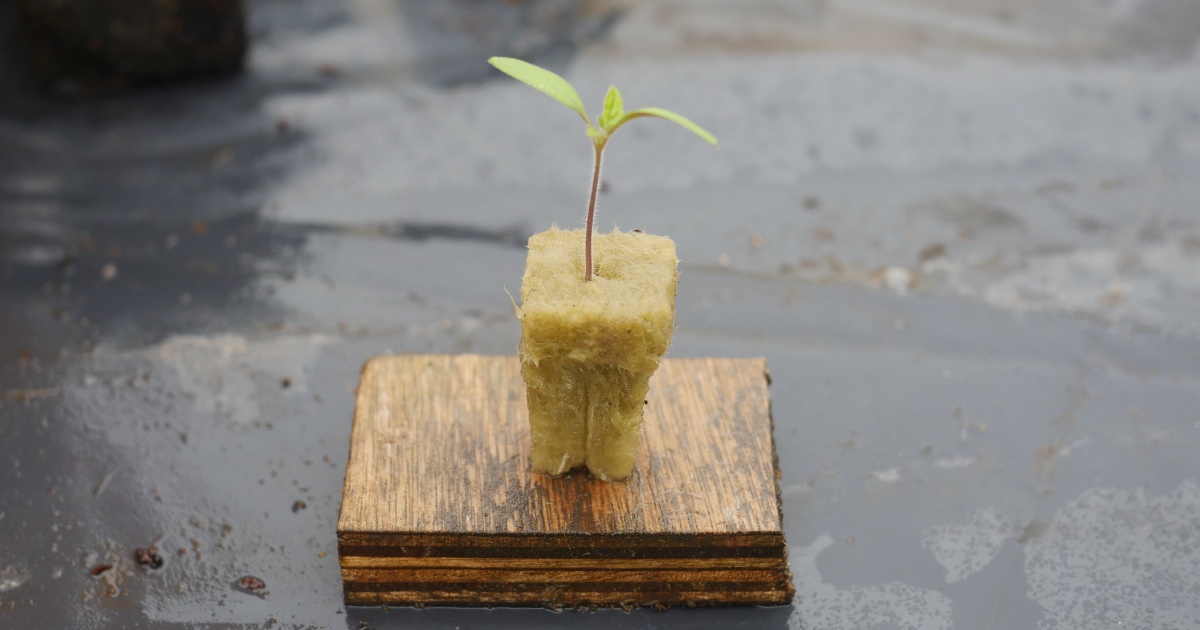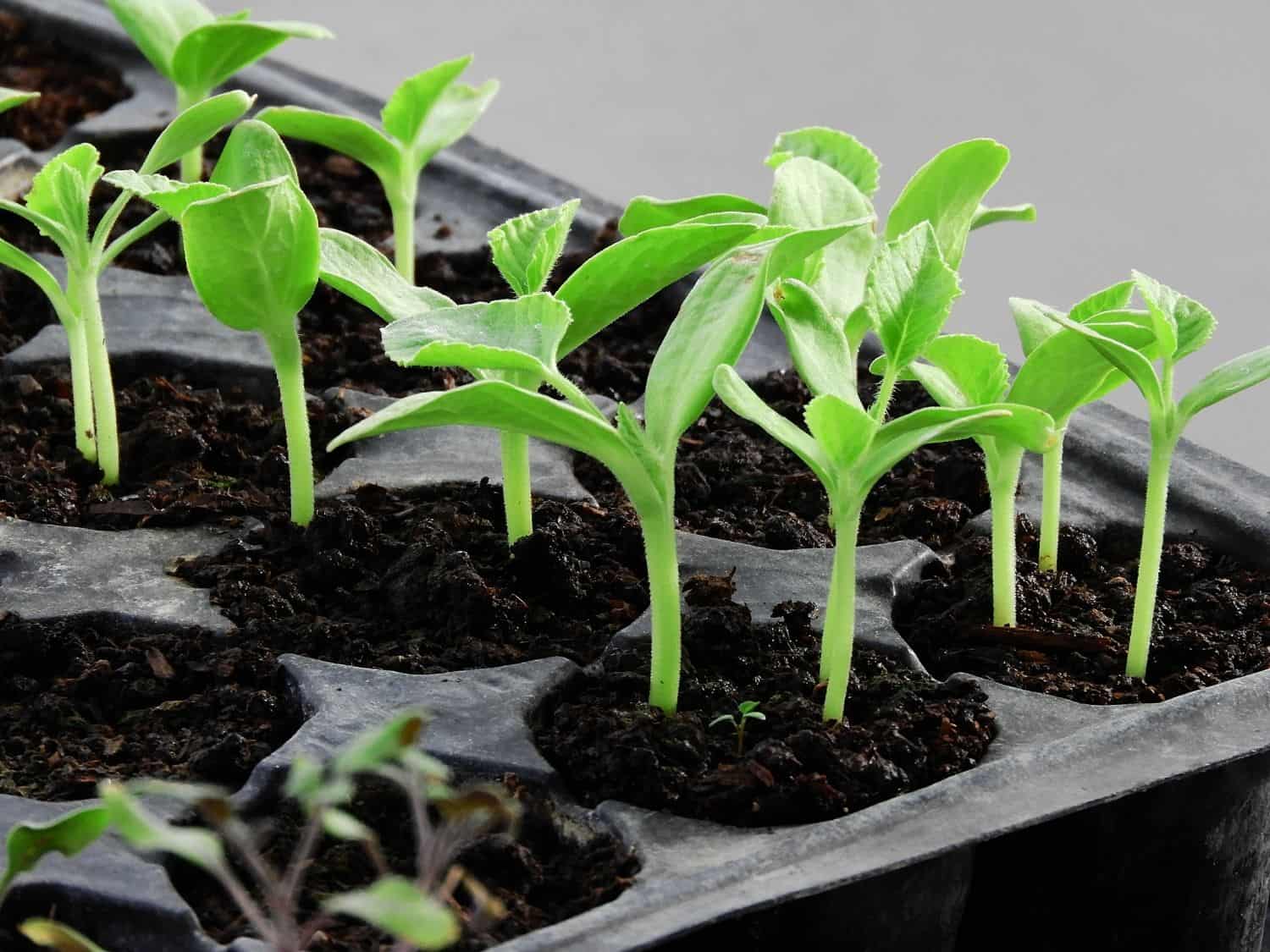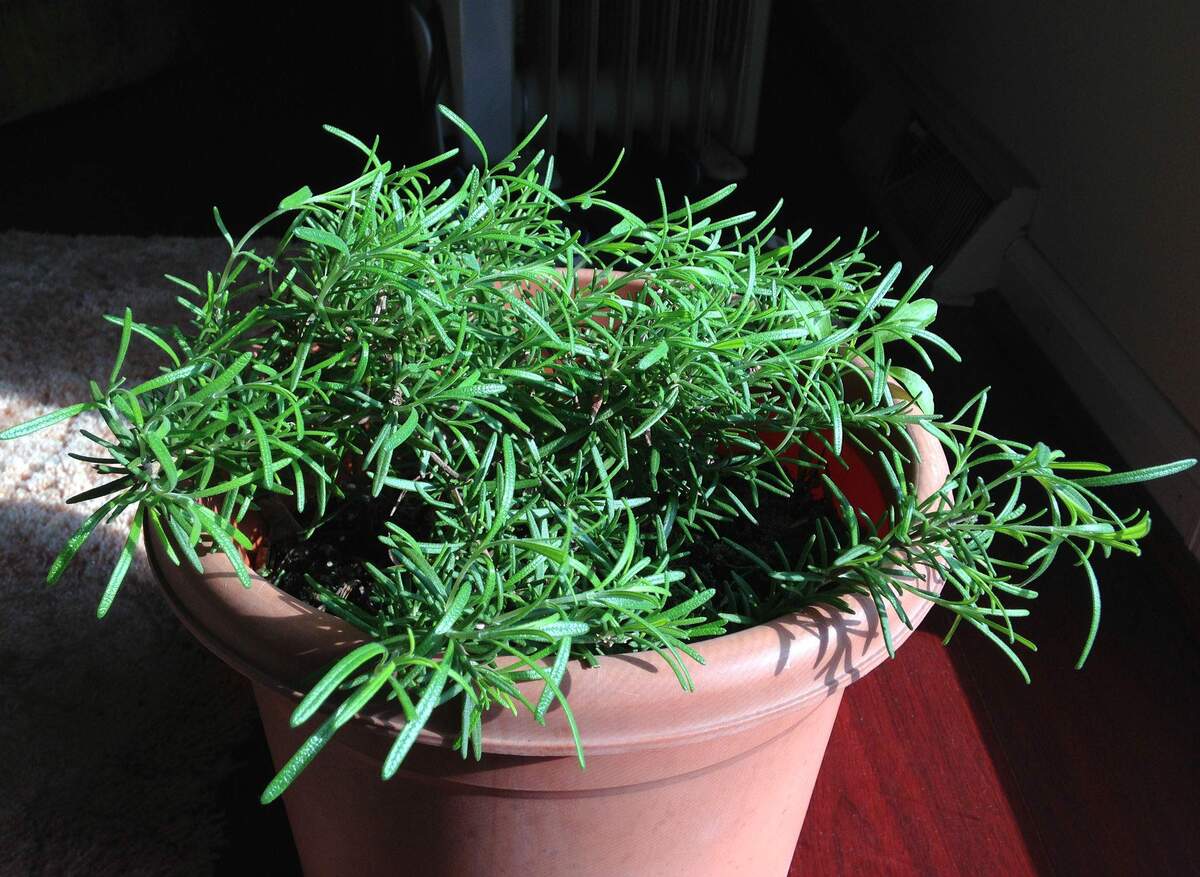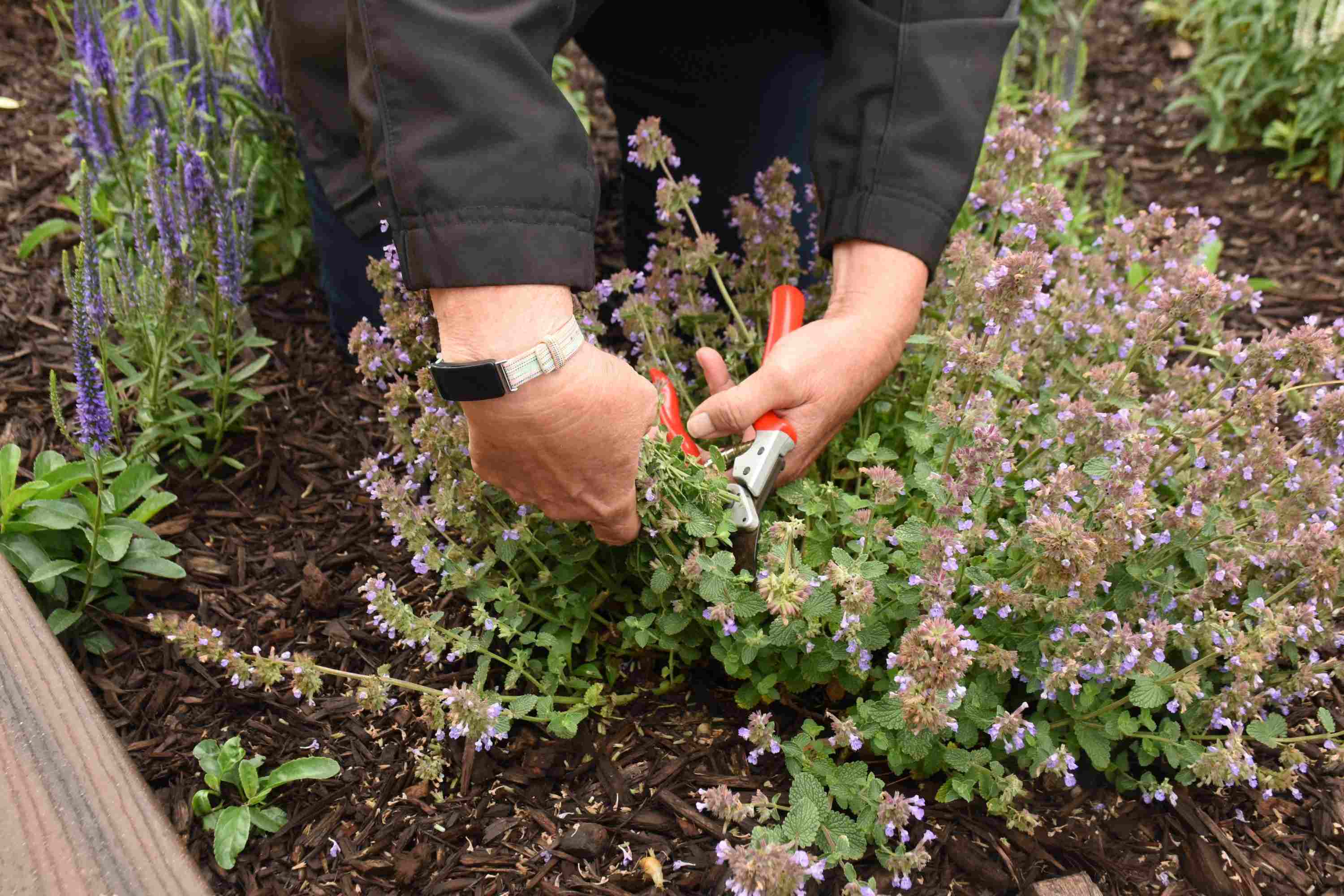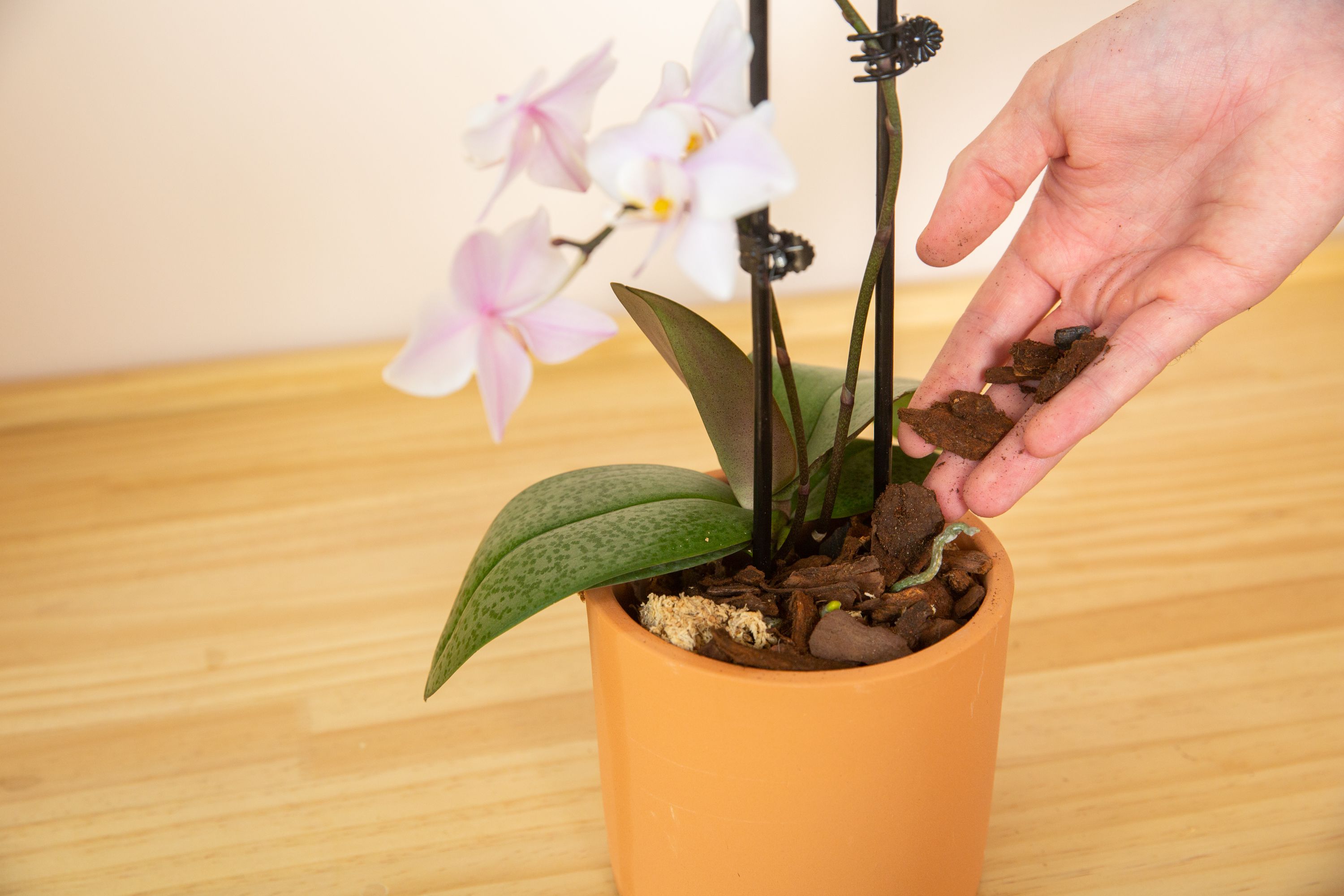Home>Gardening Techniques>Plant Care>How To Care For Sedum Succulents
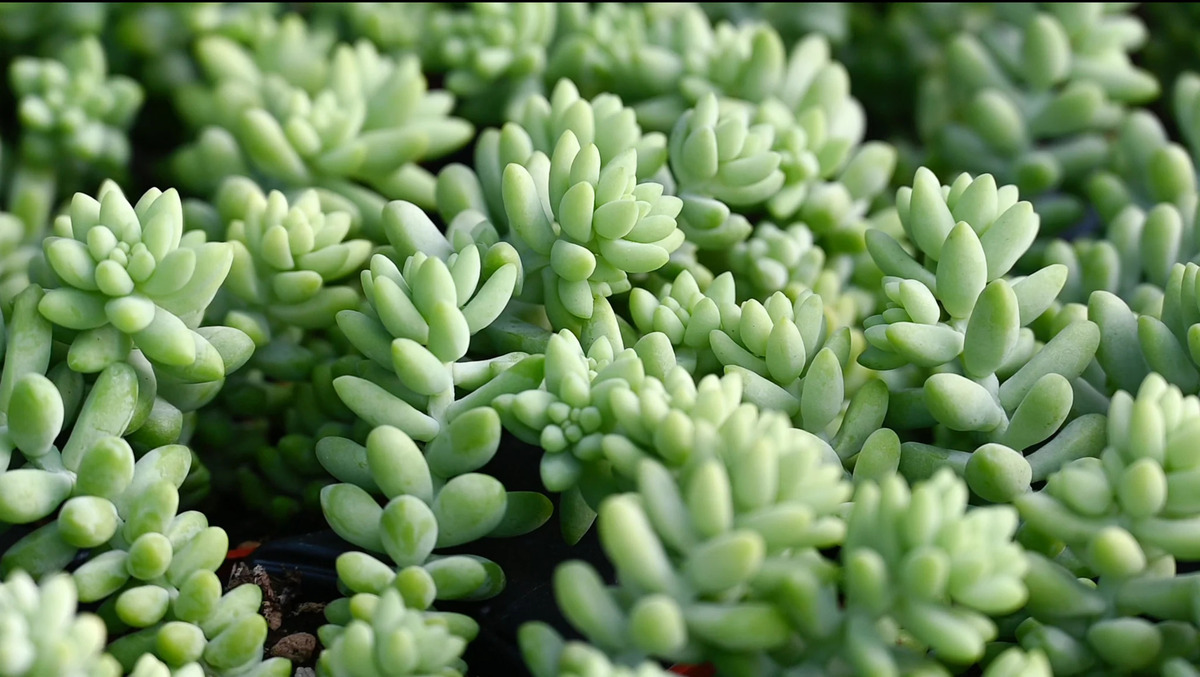

Plant Care
How To Care For Sedum Succulents
Modified: February 9, 2024
Learn expert tips on plant care for Sedum Succulents. Discover how to keep your Sedum plants healthy and thriving with proper care techniques.
(Many of the links in this article redirect to a specific reviewed product. Your purchase of these products through affiliate links helps to generate commission for Chicagolandgardening.com, at no extra cost. Learn more)
Table of Contents
Introduction
Welcome to the wonderful world of sedum succulents. These versatile plants are beloved by gardeners for their vibrant foliage, low maintenance requirements, and ability to thrive in various growing conditions. Known for their thick, fleshy leaves and drought resistance, sedums are perfect for both indoor and outdoor plant enthusiasts.
In this comprehensive guide, we will delve into the fascinating realm of sedum succulents, exploring everything from their care and maintenance to propagation and pest control. Whether you are a seasoned green thumb or just starting your plant care journey, this article will provide you with all the knowledge and tips you need to keep your sedums thriving.
Sedums, also commonly referred to as stonecrops, belong to the Crassulaceae family. With over 400 species, these succulents can be found in a wide range of shapes, sizes, and colors, making them a favorite choice for plant collectors and gardeners alike. From the popular Sedum spurium (Dragon’s blood sedum) with its deep red leaves to the Sedum morganianum (Burro’s tail sedum) with its cascading stems of plump, bead-like leaves, there is a sedum variety to suit every preference.
One of the most appealing qualities of sedums is their ability to thrive in various growing conditions. These hardy plants are known for their tolerance to drought, making them excellent options for water-wise gardens. Additionally, sedums can withstand both extreme heat and cold temperatures, making them versatile choices for a range of climates.
Whether you’re looking to add some greenery to your indoor space or create a vibrant succulent garden outdoors, sedums are an excellent choice. In the following sections, we will explore the key aspects of sedum care, such as choosing the right location, proper watering techniques, fertilization tips, pruning and propagation methods, pest and disease control, and winter care. By the end of this guide, you’ll have all the tools and knowledge necessary to successfully care for your sedum succulents and watch them thrive in all their beautiful glory.
Understanding Sedum Succulents
Sedum succulents are a diverse group of plants that belong to the Crassulaceae family. They are well-known for their thick, fleshy leaves and ability to store water, which allows them to survive in dry and arid conditions. This unique adaptation makes sedums excellent choices for low-water landscaping and drought-tolerant gardens.
There are over 400 species of sedums, ranging in size, shape, and color. Some sedums have small, compact rosettes of leaves, while others have trailing stems or upright growth habits. The leaves can be flat, rounded, or needle-like, and the colors vary from vibrant greens to deep reds and purples.
One of the distinctive features of sedums is their ability to change color throughout the seasons. Many sedum varieties display vibrant hues in the spring and summer months, and as the weather cools, their colors intensify, often transitioning to shades of red, orange, or burgundy. This natural color-changing phenomenon adds visual interest to any garden or succulent collection.
Another aspect that sets sedums apart is their resilience and adaptability. These plants are known for their ability to survive in challenging conditions, including poor soil quality, rocky terrains, and harsh climates. They can thrive in full sun or partial shade and are suitable for both indoor and outdoor environments.
In addition to their aesthetic appeal and hardiness, sedums also offer ecological benefits. Their dense foliage provides shelter and food for small insects, which in turn attract beneficial predators like ladybugs and lacewings. This natural pest control promotes a healthy ecosystem within your garden.
To fully appreciate and care for sedum succulents, it’s important to understand their specific needs. While sedums are generally low-maintenance plants, there are a few key factors to consider:
- Light: Most sedums thrive in full sun, requiring at least 6 hours of direct sunlight per day. However, some varieties can tolerate partial shade.
- Soil: Sedums prefer well-draining soil that allows excess water to escape quickly. A mix of potting soil, perlite, and sand is ideal for container gardening, while a sandy loam soil works well in outdoor settings.
- Watering: Despite their ability to withstand drought, sedums still require regular watering. It’s best to water deeply but infrequently, allowing the soil to dry out between waterings. Overwatering can lead to root rot and other issues.
- Frost-Tolerance: While sedums are often hardy in cooler climates, not all varieties can withstand severe frost. If you live in an area with cold winters, choose cold-hardy sedum species or provide protection during freezing temperatures.
By understanding the unique characteristics and requirements of sedum succulents, you can create an optimal environment for their growth and enjoy their beauty year-round. In the following sections, we will explore various aspects of sedum care, including choosing the right location, watering techniques, fertilization, pruning and propagation, pest control, and winter care.
Choosing the Right Location
When it comes to growing sedum succulents, choosing the right location is crucial to their overall health and vitality. The proper amount of sunlight, soil conditions, and protection from extreme weather elements all play a role in determining the success of your sedums.
First and foremost, most sedum varieties thrive in full sun, requiring at least six hours of direct sunlight per day. Find a spot in your garden or home that receives ample sunlight throughout the day, such as a south-facing window or a location with unobstructed exposure to the sun. This will ensure that your sedums receive the light they need to promote healthy growth and vibrant foliage.
While sedums are known for their ability to withstand dry conditions, they still require well-draining soil to prevent root rot. Make sure to plant your sedums in soil that is loose and well-draining. If you have heavy clay soil or poor drainage, consider amending the soil with organic matter or using raised beds or containers to provide the proper growing conditions for your sedums.
It’s also important to consider the climate and weather conditions in your area when choosing the location for your sedum succulents. While sedums are generally hardy and adaptable, extreme temperatures and weather conditions can have an impact on their growth. For example, in regions with scorching summers, it’s advisable to provide some shade during the hottest part of the day to prevent sunburn and heat stress on the plants.
In colder climates, not all sedum varieties are frost-tolerant. If you live in an area with freezing temperatures, choose cold-hardy sedum species or provide winter protection. Mulching around the base of the plants can help insulate the roots and prevent frost damage.
When it comes to indoor gardening, choosing the right location is equally important. Place your sedums near a bright window with sufficient sunlight exposure. If you don’t have access to natural light, consider supplementing with grow lights to provide the necessary light intensity for your sedums to thrive.
Lastly, consider the surroundings and placement of your sedums. Sedums are versatile and can be grown in rock gardens, containers, hanging baskets, or as groundcover. Take into account the overall aesthetic and design of your garden or indoor space when deciding where to plant your sedums, ensuring they complement other plants and create a visually pleasing arrangement.
By selecting the ideal location for your sedum succulents, you will provide the optimal growing conditions for these beautiful plants. Take into consideration factors such as sunlight, soil drainage, climate, and placement, and watch your sedums flourish in their new home.
Watering Sedum Succulents
Proper watering is essential for the health and success of sedum succulents. While sedums are drought-tolerant plants that have adapted to survive in dry conditions, they still require regular watering to thrive.
One of the most important things to remember when watering sedums is to avoid overwatering. Overwatering can lead to root rot and other issues that can damage the plant. Sedums have a unique ability to store water in their leaves and stems, so they can withstand periods of drought. It’s crucial to let the soil dry out between waterings to prevent excess moisture from causing problems.
The frequency of watering will depend on various factors, including the size of the plant, the climate, and the type of container or planting location. In general, it’s recommended to water sedums deeply, allowing the water to saturate the soil. Then, wait until the soil has fully dried out before watering again.
During the hot summer months or in dry climates, sedums may require more frequent watering to prevent wilting and dehydration. However, be cautious not to water too often, as this can lead to root rot. It’s better to underwater than overwater sedums, as they are more likely to recover from slight drought stress than from excess moisture.
When watering sedums, it’s best to water at the base of the plant rather than directly on the leaves. This helps avoid rot and fungal diseases that can occur when the leaves remain wet. Watering in the morning is preferable, as it allows any excess moisture to evaporate during the day, reducing the risk of fungal growth.
If you’re unsure whether it’s time to water your sedum, you can use the “stick and check” method. Insert a finger into the soil to a depth of about an inch. If the soil feels dry, it’s time to water. If it still feels damp, hold off on watering until the soil has dried out more.
It’s important to note that sedums may require less frequent watering during the dormant winter months. As the growth slows down and the plant enters a period of rest, it will need less water. Adjust your watering schedule accordingly, allowing the soil to dry out more between waterings to prevent root issues caused by excessive moisture during this time.
Remember, each sedum variety may have slightly different watering needs, so observe your plants closely and adjust your watering routine accordingly. With practice and experience, you’ll become familiar with the unique requirements of your sedum succulents.
By providing your sedum succulents with the right amount of water, you’ll help them thrive and maintain their healthy foliage. Remember to strike a balance between sufficient watering and avoiding excess moisture, allowing your sedums to flourish and brighten up your garden or indoor space.
Fertilizing Sedum Succulents
While sedum succulents are generally low-maintenance plants, they can benefit from occasional fertilization to promote healthy growth and vibrant foliage. Fertilizing sedums provides them with essential nutrients that they may not receive from the surrounding soil or natural environment.
When it comes to fertilizing sedums, moderation is key. These plants have adapted to survive in nutrient-poor soil and can thrive with minimal fertilization. Excessive fertilization can actually be detrimental to sedums, leading to leggy growth and an increased risk of disease.
The best time to fertilize sedums is during the active growing season, which typically occurs in the spring and summer months. During this time, sedums are actively producing new growth and can benefit from a nutrient boost.
When selecting a fertilizer for sedums, choose a balanced, water-soluble fertilizer with a low nitrogen content. Nitrogen promotes leafy growth, which is not desirable for sedum succulents, as it can cause the plants to become top-heavy and prone to breaking. Instead, look for a fertilizer with a higher phosphorus and potassium content, which will support root development, flowering, and overall plant health.
Before applying fertilizer, it’s essential to water your sedum thoroughly. This helps to prevent the fertilizer from burning the plant’s roots and allows for better absorption of nutrients. After watering, dilute the fertilizer according to the package instructions and apply it to the base of the plant, being careful not to get any on the leaves.
A common rule of thumb for fertilizing sedums is to apply a diluted fertilizer solution once every 4-6 weeks during the growing season. Always follow the instructions on the fertilizer packaging for the recommended dosage and frequency of application.
It’s important to note that if you are growing sedums in containers or pots, the nutrients in the soil can deplete more quickly compared to those planted in the ground. Container-grown sedums may benefit from more frequent fertilization to replenish the nutrients in their limited growing space.
While fertilizing can enhance the growth and appearance of your sedums, it’s crucial to remember that it is not a substitute for proper care and growing conditions. Providing adequate sunlight, well-draining soil, and proper watering practices should always be prioritized over fertilization.
Additionally, it’s important to avoid fertilizing sedums during their dormancy period, which typically occurs in the winter months. During this time, sedums are not actively growing, and fertilizing may disrupt their natural rest period.
By following a moderate fertilization routine and providing your sedum succulents with the nutrients they need, you can enjoy lush, healthy plants with vibrant foliage. Remember to always use fertilizers sparingly, and prioritize the overall care and growing conditions of your sedums to ensure their long-term health and vitality.
Pruning and Propagating Sedum Succulents
Pruning and propagating sedum succulents are essential skills for maintaining the health and appearance of these plants. Pruning helps keep sedums compact, encourages bushier growth, and removes dead or damaged parts, while propagation allows you to expand your sedum collection or share these beautiful plants with others.
Pruning sedums can be done throughout the year, but spring and early summer are often the best times for this task. Begin by inspecting the sedum plant for any dead, diseased, or damaged parts. Using sanitized pruning shears, carefully remove these unwanted sections, making clean cuts just above healthy growth nodes or leaf joints.
Regular pruning can also help maintain the desired shape and compactness of sedum plants. If your sedum starts to appear leggy or stretched out, you can trim the stems to promote bushier growth. Simply cut back the stems to the desired length, keeping in mind that sedums have the ability to quickly grow new foliage.
Propagation is a popular method for expanding your sedum collection or sharing these fascinating plants with friends and family. Sedums can be propagated through various methods, including stem cuttings, leaf cuttings, and division.
Stem Cuttings: To propagate sedums through stem cuttings, select a healthy stem from the parent plant and cut it just below a leaf node. Allow the cutting to dry for a few days, then place it in a well-draining potting mix or a mixture of sand and perlite. Keep the soil slightly moist until new roots start to develop, which usually takes a few weeks.
Leaf Cuttings: To propagate sedums through leaf cuttings, gently remove a leaf from the parent plant, making sure to include a small portion of the stem. Place the leaf on a well-draining soil mix, ensuring that the stem end is inserted into the soil. Mist the leaf occasionally to maintain humidity, and new plantlets will form at the base of the leaf. These plantlets can be carefully separated and potted once they have developed roots.
Division: Some sedum varieties can be propagated through division. This method involves separating the offsets or clumps of the parent plant and potting them individually. Make sure each division has a healthy root system and a sufficient number of leaves to sustain growth.
When propagating sedums, it’s important to provide the right growing conditions to help the new plants establish themselves. Place the newly propagated sedums in a bright location with indirect sunlight, and water them sparingly until they have developed a strong root system.
Pruning and propagating sedum succulents are rewarding tasks that allow you to shape and expand your collection while promoting the overall health and vigor of these plants. By mastering these techniques, you can ensure the longevity and beauty of your sedum succulents for years to come.
Protecting Sedum Succulents from Pests and Diseases
While sedum succulents are generally resilient plants, they can still fall victim to pests and diseases if proper precautions are not taken. Protecting your sedums from common pests and diseases is essential to maintaining their health and ensuring their longevity.
One of the most common pests that can affect sedums is the mealybug. These small, white, cotton-like insects can cluster on the leaves and stems, sucking out the plant’s sap and causing leaf discoloration and stunted growth. To combat mealybugs, regularly inspect your sedums for any signs of infestation and take prompt action if necessary. In mild cases, manually removing the bugs with a cotton swab dipped in rubbing alcohol can be effective. For more severe infestations, consider using an insecticidal soap or neem oil spray to control the pests.
Another pest that can trouble sedums is the aphid. These tiny sap-sucking insects are often found in large groups on new growth or the undersides of leaves. They can cause leaf curling, yellowing, and overall decline in the plant’s health. To prevent and control aphids, try using a strong stream of water to dislodge them from the plant. Alternatively, you can use insecticidal soap or neem oil sprays to eliminate the infestation. Encouraging natural predators like ladybugs and lacewings can also help keep aphid populations in check.
Sedums can also be susceptible to fungal diseases such as powdery mildew and root rot. Powdery mildew appears as a white, powdery coating on the leaves, while root rot causes the roots to become soft, mushy, and discolored. To prevent fungal diseases, ensure that your sedums are planted in well-draining soil and avoid overwatering. Provide adequate air circulation around the plants by spacing them apart and removing any debris or dead leaves. In cases of fungal infection, remove and dispose of the affected plant parts, and consider applying a fungicidal spray to prevent further spread.
Preventing pest and disease problems in sedum succulents starts with practicing good plant care. Providing the optimal growing conditions, such as well-draining soil, proper watering techniques, and adequate sunlight, can strengthen your sedums’ natural defenses against pests and diseases. Regularly inspecting your plants for any signs of trouble and taking immediate action can help prevent infestations from spreading and causing significant damage.
In addition, it’s essential to quarantine new plants before introducing them to your existing sedum collection. Quarantining allows you to closely monitor the new plants for any signs of pests or diseases before they have the chance to spread to your other sedums.
By following these preventive measures and promptly addressing any pest or disease issues, you can protect your sedum succulents and ensure they stay healthy and free from harm.
Winter Care for Sedum Succulents
Sedum succulents are known for their ability to withstand harsh conditions, including winter weather. However, providing proper winter care is still important to ensure the health and longevity of these plants during the colder months.
One of the key aspects of winter care for sedum succulents is to protect them from excessive moisture. Sedums are susceptible to rot and fungal diseases when exposed to prolonged periods of wet soil. To prevent this, make sure your sedums are planted in well-draining soil and avoid overwatering. Reduce watering frequency during winter, allowing the soil to dry out more between waterings.
In regions with freezing temperatures, it’s important to provide some level of protection for your sedums. Most sedum species are hardy and can tolerate frost, but extreme cold and persistent freezing conditions can still cause damage. Mulching around the base of the plants with a layer of organic matter, such as straw or dried leaves, can help insulate the roots from the freezing temperatures.
Another consideration for winter care is sunlight exposure. Sedums require sunlight even during the winter months, so make sure to position them in a location where they can still receive adequate sunlight. If necessary, consider using protective coverings, such as row covers or frost cloths, to shield the plants from harsh winds and frost while still allowing sunlight to reach them.
During winter, sedums enter a period of dormancy. Their growth slows down significantly, and they may experience some leaf loss. This is a natural process, and there is no cause for concern. It’s important to resist the temptation to prune or trim the plants during this time, as it can disrupt their natural rest period.
If you are growing sedums in containers, it’s advisable to bring them indoors during winter, especially in regions with extremely cold temperatures. Place the potted sedums in a cool and bright location, such as a sunny window or a room with supplemental grow lights. Maintain reduced watering during this time, allowing the soil to dry out more between waterings.
Winter is also a good time to assess the overall health of your sedums and address any issues that may have arisen during the growing season. Inspect the plants for any signs of pests or diseases and take appropriate action to prevent the spread of infestations or infections.
By providing the proper winter care, you can ensure the survival and well-being of your sedum succulents through the colder months. Protecting them from excessive moisture, frost, and providing adequate sunlight will help your sedums thrive and be ready to flourish once the warmer temperatures return.
Conclusion
Caring for sedum succulents is a rewarding and enjoyable experience. These resilient plants offer a wide range of shapes, sizes, and colors, making them a versatile choice for any plant lover. With their ability to thrive in various growing conditions, including low-water landscapes and indoor environments, sedums offer a beautiful and low-maintenance option for both beginner and experienced gardeners.
In this comprehensive guide, we have explored the key aspects of sedum care, from understanding the characteristics of sedum succulents to choosing the right location, proper watering techniques, fertilization tips, pruning and propagation methods, pest control, and winter care.
By understanding the specific needs of your sedum succulents and providing the optimal growing conditions, such as well-draining soil, adequate sunlight, and proper watering, you can ensure their health and longevity. Regular maintenance tasks like pruning and propagation allow you to shape and expand your sedum collection, and safeguarding against pests and diseases helps maintain the beauty and vibrancy of your sedums.
Remember to strike a balance between providing sufficient care and avoiding excessive interventions. Sedum succulents are resilient by nature and do not require high levels of maintenance. It’s important to observe your plants closely, be attentive to their needs, and adjust your care routine accordingly.
With the knowledge and tips provided in this guide, you are now equipped to embark on your sedum care journey and enjoy the beauty of these fascinating plants. Whether you choose to grow sedums outdoors in your garden, create a stunning succulent arrangement indoors, or both, your sedums will reward you with their vibrant foliage and unique forms.
So go ahead, explore the world of sedum succulents, experiment with different varieties, and create your own oasis of greenery and beauty. Happy gardening!
